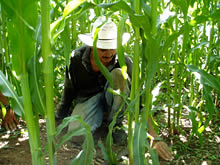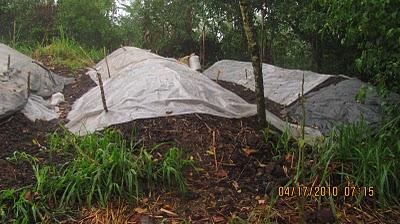The soil’s second chance
One strategy to replenish and maintain soil fertility involves the creation of bocashi. This highly effective and inexpensive natural fertiliser can be made from readily-available materials, including manure, coffee pulp, or rice hulls, together with yeast and molasses. These are then mixed with healthy soil. The yeast feeds on the molasses during a 15-day fermentation and decomposition process, aided by mixing manually twice-a-day. The bocashi mix is then added to crops, and yields either match or improve upon those obtained with chemical fertilisers – at a fraction of the cost.
Source: Learning not to burn – transforming land and livelihoods in Central America
(Note: This is another example of “cutting the EM hype”, as the method described is a simple farm compost recipe. It involves fermenting to avoid putrefaction. No more, no less. In this case, using yeast.)


